A measuring instrument or a meter is anything that can identify a particular parameter. The most common measuring instrument is a moisture meter, thermometer, airflow meter, distance meter, etc.
A Moisture Meter as the name goes is a humidity meter. Moisture meters in New Zealand are extremely common devices as the humidity levels here are very unpredictable throughout the year irrespective of seasons. Moisture meters are used to detect moisture levels of various surfaces, materials, and environments.
Contact our sales team at +64 0 061 7007 for immediate buy from Stock.
We are supplying moisture meter in Waikato, Auckland, Canterbury, Wellington & other cities of New Zealand.
Use of Moisture Meter
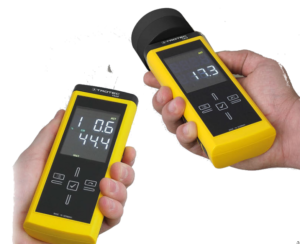 If the determination of moisture is quick, it results in high-level safety and prevents damages from occurring to walls, interiors of the buildings, structures, etc. Humidity measuring or moisture measurement is used for various purposes including domestic usage. For example, the moisture content in Firewood can be easily detected with the help of a moisture meter. Moisture meters are used for various other reasons be it domestic, commercial, or industrial uses.
If the determination of moisture is quick, it results in high-level safety and prevents damages from occurring to walls, interiors of the buildings, structures, etc. Humidity measuring or moisture measurement is used for various purposes including domestic usage. For example, the moisture content in Firewood can be easily detected with the help of a moisture meter. Moisture meters are used for various other reasons be it domestic, commercial, or industrial uses.
Read more about Why Do Contractors use Moisture Meters.
Ambale Moisture Meters are hand-held devices that identify the humidity content and display the reading on the unit. They are used for safety purposes in detecting moisture in homes, offices, construction sites, etc. Few of the meters can detect almost 40mm depth on a particular surface.
Why do you practically use a Moisture Meter?
Elimination of Moisture is an essential requirement in certain applications. Ambale Moisture devices are used in wood moisture detection and building moisture detection. These devices give out reliable data and give information on the spots affected by high moisture. Moisture present in building materials and wood can have dangerous consequences. It results in the structure of the building getting damaged and creates a risky environment for people who are in those facilities. Read about Moisture Meters for Woodworking Professionals NZ.
Problems that occur to building structures due to humidity and moisture are that they become porous and the plaster starts coming out in flakes. With help of Ambale Moisture meters in New Zealand, you can almost detect moisture in anything and everything, which means any application may be able to use these meters for their requirements. Learn about Best Moisture Meters for Woodworkers.
By using our moisture devices, you may also be able to identify the degree of moisture in various types of wood and timber. These units can be used for your personal use to detect then firewood moisture levels or even for woodworking companies in New Zealand where they need to check a certain degree of dryness in timber before they are processed. These moisture meters are very handy and useful. 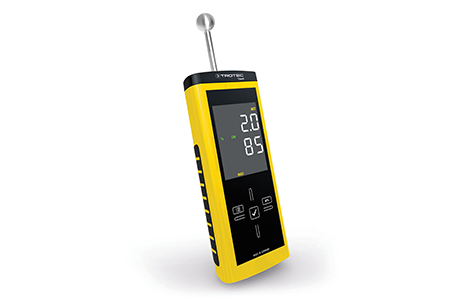
- We supply moisture meters that are designed to a high-quality standard in Germany. This is a high-standard produced product.
- Moisture meter design is robust, IP54 type of protection. These devices are premium two-component construction.
- Meter has a glass that is easy to clean for display.
- Glass is made up of highly scratch-resistant material. It is a Blanview special glass for display which provides high contrast. Thus, easy to read values even in the sunlight.
- The touchscreen control panel is Capacitive.
- Two measured values are displayed simultaneously which has a high-resolution color display.
- The moisture alarm function makes the device more convenient for the user.
- In the model T660, material pre-selection is designed for anhydrite and cementitious screed.
- Model T660 directly displays the measured values in mass % and CM %.
- Through a USB connection, one can take the data with an active software connection.
- It works with the software Multi Measure Studio which is a data management software.
How and Where is Moisture Meter used?
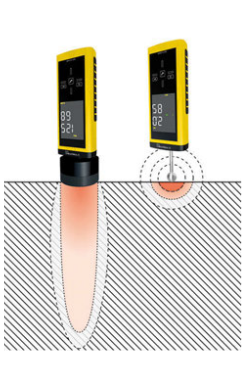 Moisture Meters are defines can be used in any and every application where humidity levels or moisture levels need to be determined. Ambale has moisture measuring instruments for all your requirements. The most popular moisture meter is for simple usage. They are handy and robust resistance meters, here 2 electrodes are initiated to the building materials for measurements or the timber/wood to be processed. Read Why Woodworkers need to use moisture meters in New Zealand?
Moisture Meters are defines can be used in any and every application where humidity levels or moisture levels need to be determined. Ambale has moisture measuring instruments for all your requirements. The most popular moisture meter is for simple usage. They are handy and robust resistance meters, here 2 electrodes are initiated to the building materials for measurements or the timber/wood to be processed. Read Why Woodworkers need to use moisture meters in New Zealand?
If the current is conducted well, the dampness is detected in the material. This principle of the resistance meter is very simple and easy to understand. When it comes to detecting moisture levels in building materials like wood, plaster, screed, and gypsum, it is literally just a click away always.
At times, few applications require us to measure the moisture levels without pricking or touching the materials. If you want such in-depth moisture measurements, there are measuring devices that make use of a method called dielectric measurement. Read about Moisture meters for building inspection.
This is an alternative and professional method. In such devices, a speedometer is used which gives out a non-destructive measurement over a few centimeters. By doing this, soaked points are detected and they give out accurate information on the moisture levels in that material. Learn more on The use of Moisture meters for Building Inspection in NZ.
Applications for Moisture Meters
Moisture Meters are used in various applications and industries. They are used in domestic, commercial, industrial, etc. If there is a requirement to detect moisture in firewood, or if someone needs to identify the reason for mold growth in their home or business facility, or say for a large-scale drying facility that is affected by water damage: Ambale Moisture meter devices are precise and quick to get to the depth of the problem.
Few noticeable applications for Moisture Meters are: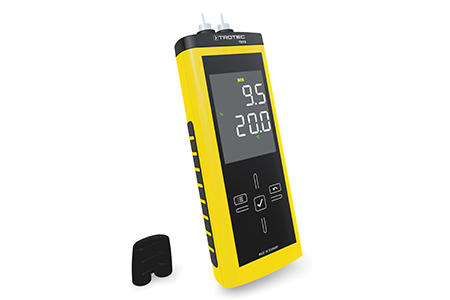
- Construction Companies
- Wood and Timber Yards
- Steel and Iron Industries
- Food and Beverage Industries
- Logistic Companies
- Airlines/Aircraft Hangers
- Offshore and Onshore Wind Turbines
- Storage Areas
- Coating Companies
- Flood Repairs and Damage Control Companies
- Hygroscopic Material Manufacturers
- Fertilizer Companies
- Chemical Factories
- Gas Turbine Power Stations
- Cargo and Ship Holds
- Packaging Industries
- Waterworks
- Sports Facilities
- Indoor Swimming Pool Areas
The list can go on and on. Moisture has to be maintained at particular levels depending on the type of place and application. It is not good if the moisture levels are too high or too low. It has to be taken care of. Ambale Moisture meters are measuring instruments in New Zealand that are being used for almost every industry to create a more safe and productive business environment for people to work as well as for the profitability of the companies in terms of maintaining the quality of products. Learn about Quick Wood and Building Moisture Measuring Unit.
As humidity levels are always fluctuating in New Zealand, if the moisture meters detect high humidity, then Ambale provides Dehumidifier solutions to bring down the relative humidity levels to the desired point. We can give you more information once we understand your requirement more in detail. Learn and understand Wood Moisture Meters in detail.
We have a few popular models in the moisture meter category:
A few of our models are as below:
- Hydrometers
- Wood Moisture Meters
- BM12 Moisture Meter
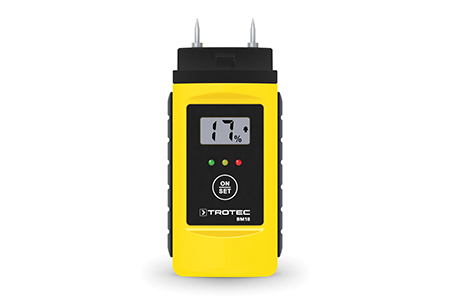
- BM18 Moisture Measuring Unit
- BM22 Moisture Meter
- T510 Moisture Meter
- T510K Moisture Meter
- T660 Moisture Meter
These are the most popular moisture meters we have and all are extremely accurate and function well in any application to requirement.
Moisture Meter Technical Description
Ideal to assess moisture distributions nearby up to 4 cm quickly and non-destroying
- The T660’s model is based on the integrated material.
- The pre-selection function for anhydrite and cementitious screed measurement.
- T660 models display directly in mass % or CM %.
- A functional method is the integrated conversion of measured values.
- The T660 lets the floor layers quickly check the readiness for covering.
- Mostly with T660, the floor layers will easily verify the covering readiness.
- CM measurements can carry out the preliminary check of building materials.
- The T660 is also suited for measuring the dielectric moisture in non-destructive woods.
- The T660 is also suitable for non-destructive wood moisture dielectric measurements.
Brilliant large-digit display
- The measuring devices come with a display glass.
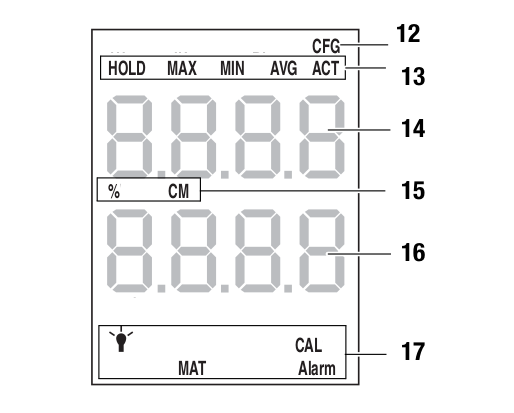
- The display glass ensures a high-contrast presentation.
- The light display lets you ensure presentation in bright sunlight as well.
- This allows quick and accurate wall and floor detection.
- It lets you detect the moisture distribution in the floor areas.
- The large-scale and real-time measurement value can be combined.
Integrated alarm function
- The integrated alarm function is handy and time-saving.
- The individual limit value can be defined for both devices.
- A single limit value for both devices may be specified before measurement.
- When the warning value is exceeded, the acoustic alert signal is immediately released.
- The large wall and floors can be quickly and effectively measured.
- The consumer can only concentrate on the measurement object without any disturbance.
- The customer must not always have an eye on the results displayed.
Specifically designed for quick, non-destructive sub-surface measurements
- The T610 is designed for quick and non-destructive sub-surface measurement.
- The microwave technology only allows the detection of moisture distributions
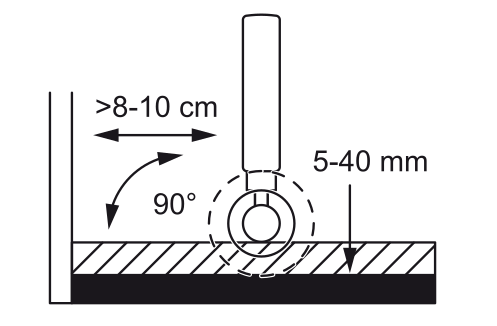
- It lets you detect depths of up to 300 mm.
- The method works independently of the material’s salinity.
- When an older or a new building is inspected, the microwave method is unnecessary.
Ideally suited for combined building diagnostics measurements
The material moisture measuring devices T610 and T660 individually can not only splendidly be used for the non-destructive moisture measurement in building materials, walls, ceilings, or floors, but in joint application also facilitate additional examination options: Through combined surface and sub-surface moisture measurement complex correlations can be distinguished, narrowed down and classified as well,e.g. occurrence in hygroscopic moisture due to the detection of salinity or leak. Read more on the Different types of moisture measuring devices in New Zealand.
The T660 collects the largest two or four cm of the buildings and the T610 tests the moisture content values at a depth of 30 cm. Measuring the grid on the basis of surface and subsurface measurement values will yield important results for a multi-dimensional distribution for moisture. The multi-measured studio program in the distribution scope offers a handy support feature to generate and display grid measurements through an active USB link to the measuring unit. Read about Building Material Moisture Measuring Device.
Comparison of Moisture Meter Model T610 and T660
- The material moisture ascertainable measured values of both T610 and T660 are different, T610 the subsurface moisture in (digits) whereas T660 measured value the near-surface moisture in (digits, mass %, CM%).
- The measuring principle of T610 is Microwave and for T660 it’s Dielectric.
- The measuring range for T610 is 0 to 200 digits and for T660 it’s 0 to 200 digits anhydrite screed,0to 7.3 mass%, 0to 7.3 CM% cementitious screed,0 to 7.6 mass%, 0 to 5.5 CM%.
- The accuracy for T610 and T660 is the same 0.1 digits.
- The resolution for both T610 and T660 is 0.1 digits.
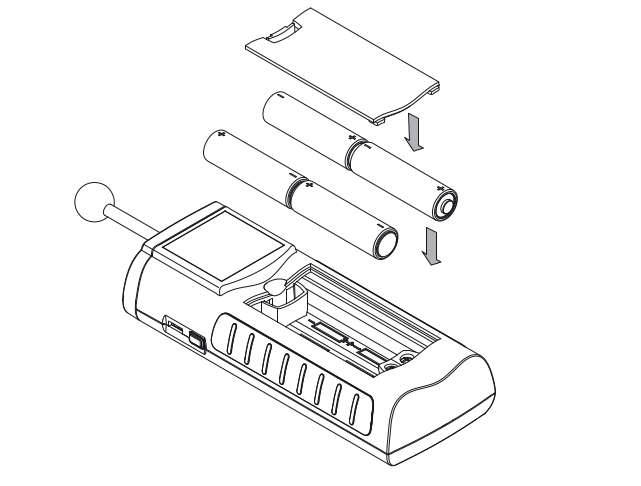
- The penetration depth for T610 is up to 300mm whereas the T660 has up to 40 mm.
- Both the models measure the real-time, minimum, maximum, and average value plus display value hold function.
- T610 and T660 have adjustment functions such as offset adjustment for digit measurements, variable display illumination with dimmer function, automatic switch-off key lock, measured value storage plus only T660 can material pre-selection for anhydrite and cementitious screed.
- Both models do not have alarm functions.
- The internal power supply for both models is 4 x 1.5V, type AA, IEC LR06, or comparable NIMH rechargeable batteries (>2500mAh).
- The external supply can be done through USB.
- The display for both the models consists of a high-resolution color display for simultaneous indication of two measured values.
- Both the models can be controlled through a captivative touchscreen with cross control.
- The front glass (display and touchscreen) is highly scratch-resistant – Blanview, a special glass for high contrast display even in the sunlight, chemically hardened, degree of hardness is 7.
- The housing protection for both models is IS54.
- The interface model for both is USB.
- The operating conditions for both are 0 to + 50 degrees C, less than 90% RH.
- The storage condition for both the models is minus 10 to + 60 degrees C, and less than 95% RH.
- The dimensions for T610 are 191x 65x65mm whereas in T660 it’s 209x63x35mm.
- The T610 weighs 425g and T660 weighs 285g including the batteries.
- The standard delivery consists of measuring device, screen protective film, silicon cover, USB cable, batteries, Getting standard guide, factory test certificate, and multi-measure standard studio standard PC software.
- The optional delivery consists of screen protective film( Art no. 3.510.200.220), silicon cover (Art no.7.330.000.065), holster 3 bag (Art no. 3.510.200.228), and PC software multi-measure studio professional (At. no.3.510.204.010).
Principle of measurement
Measurement undertook in conjunction with the principle of dielectric measurement.
Notes regarding the measurement principle
- The results of measurement should be used with a rough orientation only.
- The bulk density of the good is a significant variable that affects the measured value.
- The measuring point should be separated from all impurities (e.g. traces of paint, dust) before the measurement.
- If the object to be measured includes a metal (e.g. nails, screws, lines, tubing, etc.) and is placed within the measurement field of the sensor, the measured value would skyrocket. In that case, the measurement is not definite. At which ball head is kept at corners (e.g. window frames), the estimated value is usually greater since there is more matter in the stray region of the measuring head. A difference of more than 8 to 10 cm shall be observed at the corner.
- Always hold the measuring head vertically to measure material during the test, do not tilt and press it on the surface.
- Rough surfaces can often result in a low measured value.
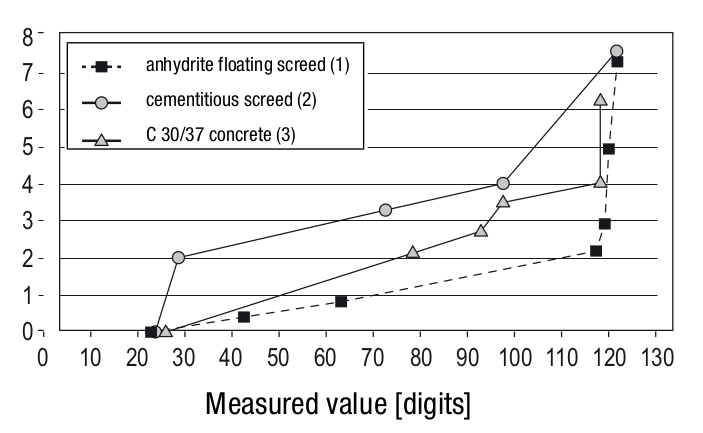
- Based on the bulk density of the material, the impact depth of the instrument is between 20 and 40 mm. Observations on areas situated at a lower level cannot be produced.
- For material thicknesses of less than 20 mm, there is a chance of moisture values from neighboring material layers impacting the measured value.
- The major area of application of the dielectric measuring method consists of comparative measurements of the same construction material or similar materials. This approach is also well adapted for the analysis of water damage, the detection of leaks, and the placement of moisture zones for the purpose of identifying the measuring point for CM measurements.
Measured value assessment for wood
The outcome of the measurement is either in a dry or saturated environment. Saturated means that in addition to the water-bound in the wood, there is extra liquid. If there is, however, a measured worth of more than 80, the wood is often wet. When the display is less than 50 digits the wood moisture zone is dry whereas when the 80 digits higher than the wood moisture zone limit to the saturated range. 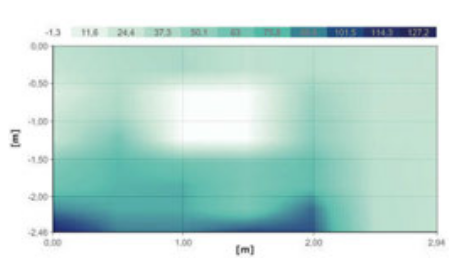
Since the measurement value of the dielectric method – depending on the marginal conditions – is subject to different variability, it is also preferable to quantify resistance, in particular to the determination of wood moisture.
Measured value assessment for building material
For construction materials, the measurement outcomes of the dielectric measurement process may only be used as a reference for rough orientation. Conclusions on absolute humidity in mass per unit (M percent) can only be taken for tests carried out under the exact same marginal conditions and compositions of the building material as shown for the test set-up in the table below.
Read about Wood, Building Moisture Measuring Unit.
The graph was drawn up in collaboration with the Institute of Building Materials Research of the RWTH Aachen (IBAC) and indicates the connection between the measured value and the mass-related moisture content of the tested building materials. The spread of the achieved measurement results for the dielectric measuring system is clearly higher than for the resistance measurement method. Learn about Material Moisture Measuring Device.
The dielectric measurement approach is not appropriate for quantitative measurement, but rather for qualitative measurement of near-surface moisture. The measured values shown are not the result of authorized moisture measurements as per VOB (German Building Contract Procedures) or the applicable specialized regulations. Learn How Moisture Meters Work?
Multi Measure Studio Professional – One Software for all measuring devices
- It is ideally suited for compatible measuring devices such as T610 and T660.
- It is usable with many partially compatible devices as well.
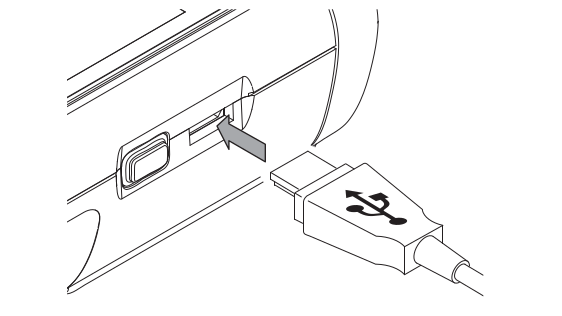
- This software can also be used by owners of isolated external devices.
- It allows the study and control of all measurement projects and consumer data across different instruments in a single application.
- Professional reports can be created in a trice using a unique report generating function.
- Numerous textbooks for building diagnostics, moisture analysis, leak detection, and thermography can be thoroughly formulated.
Ambale Moisture Meter Solutions
Ambale Moisture Meter Solutions are manufactured in Europe which are well suited for various requirements.
Ambale Moisture Meters are available and supplied in Auckland, Wellington, Northland, Christchurch, Fiji, Hamilton, Queenstown, Tauranga, and all parts of New Zealand and Fiji. Please contact our technical team at Ambale Co. by sending us an email at info@ambale.co.nz or call us on +64 22 061 7007. We believe in providing perfect solutions with great quality and service.
